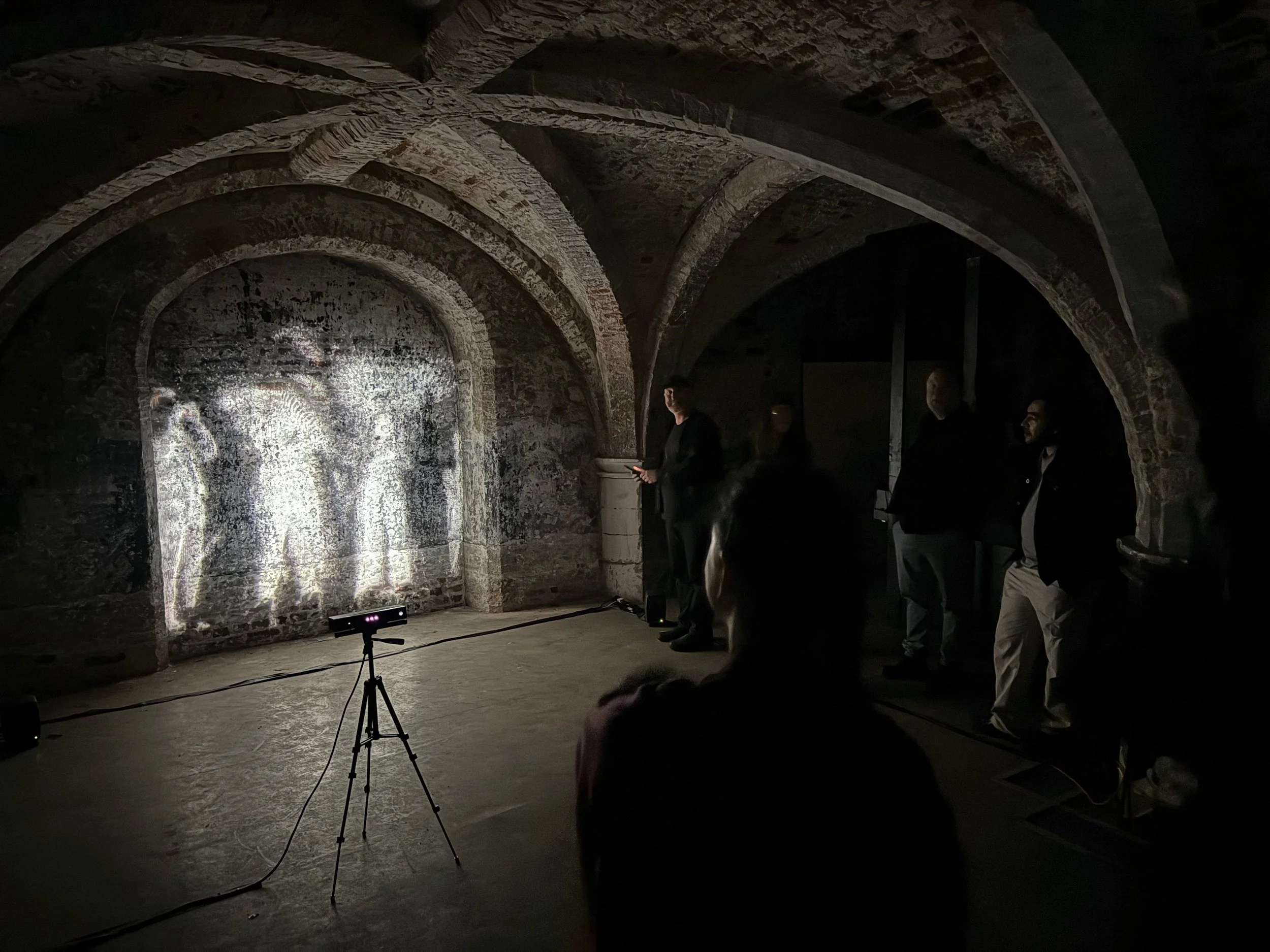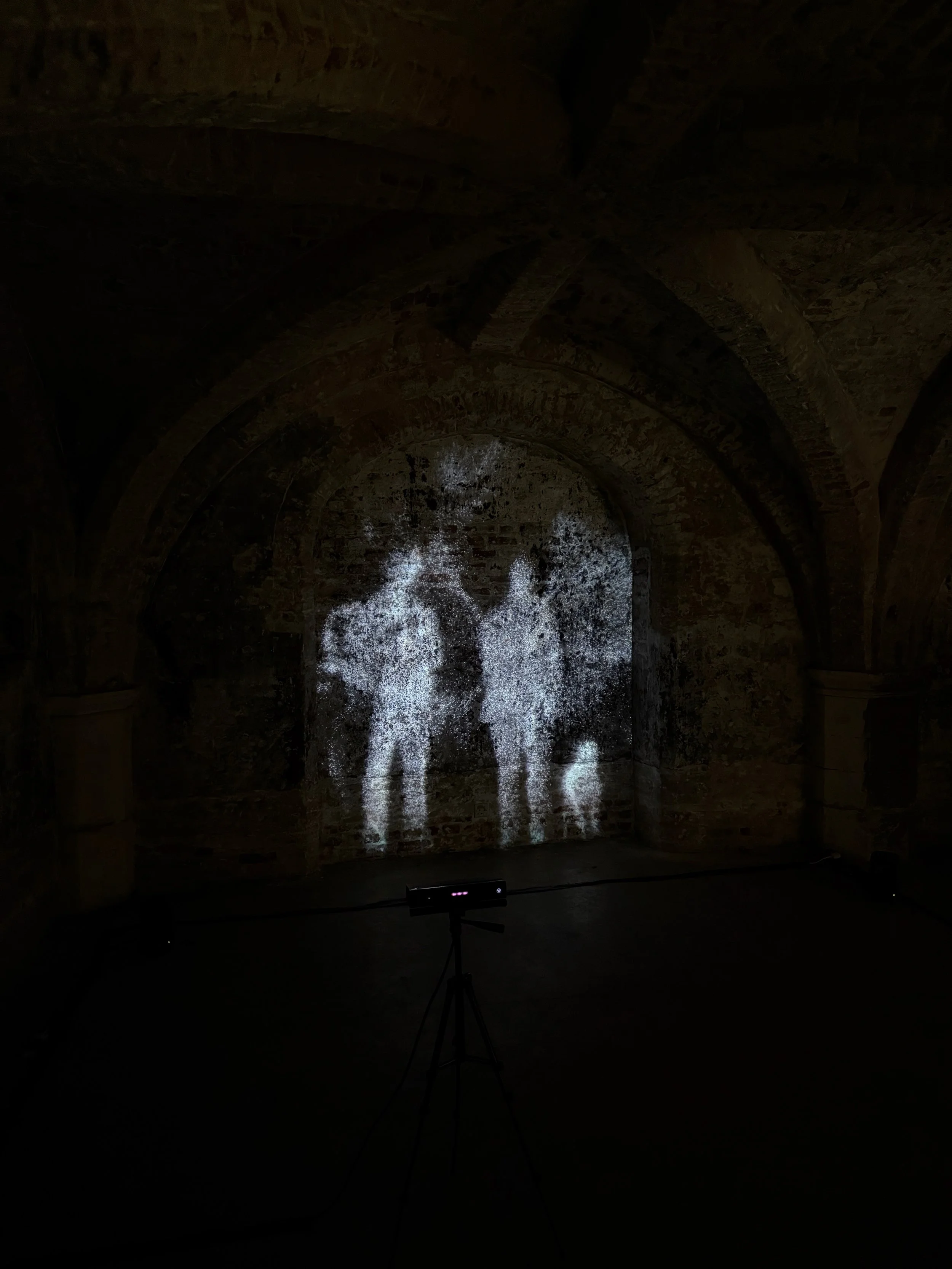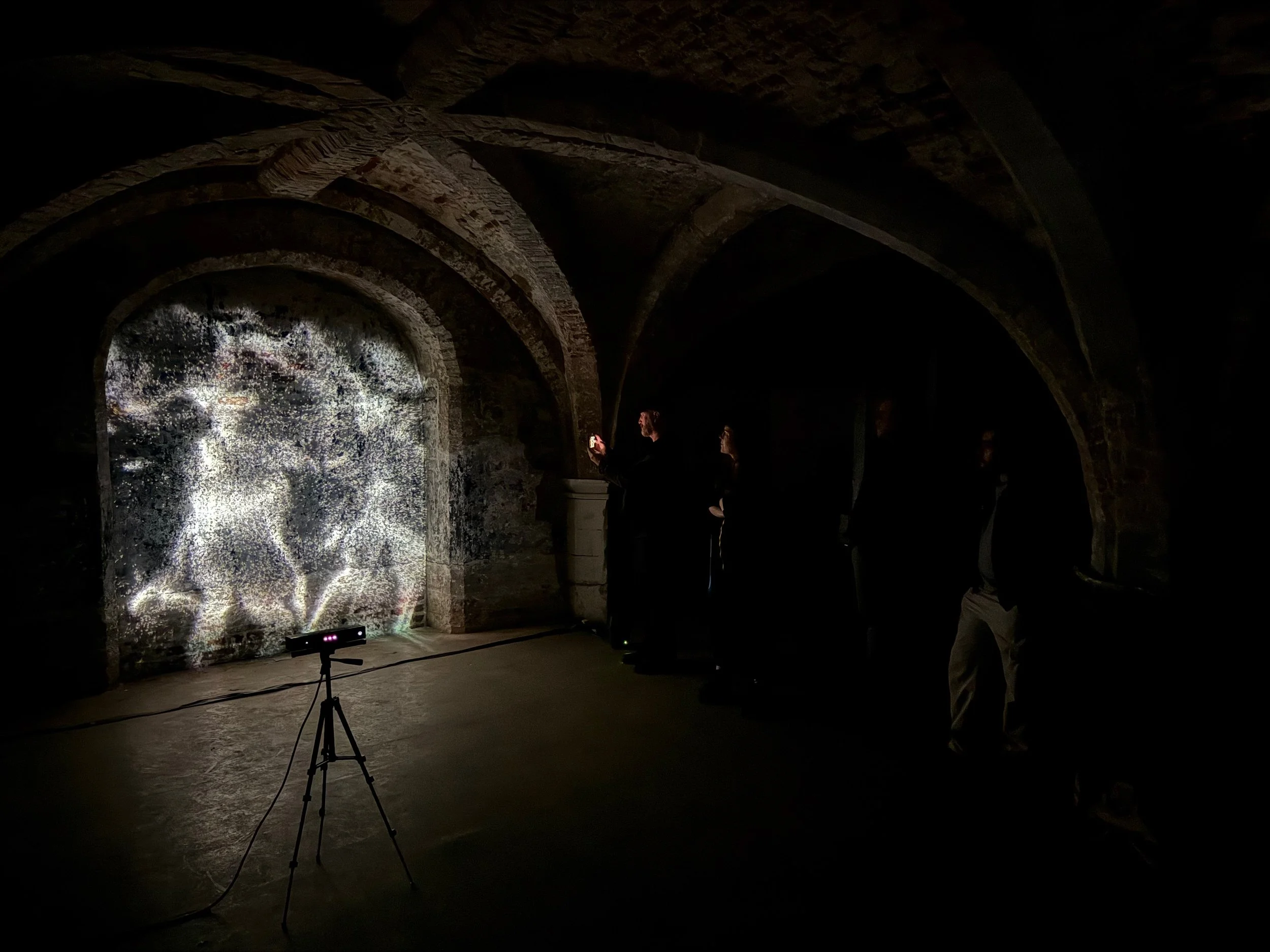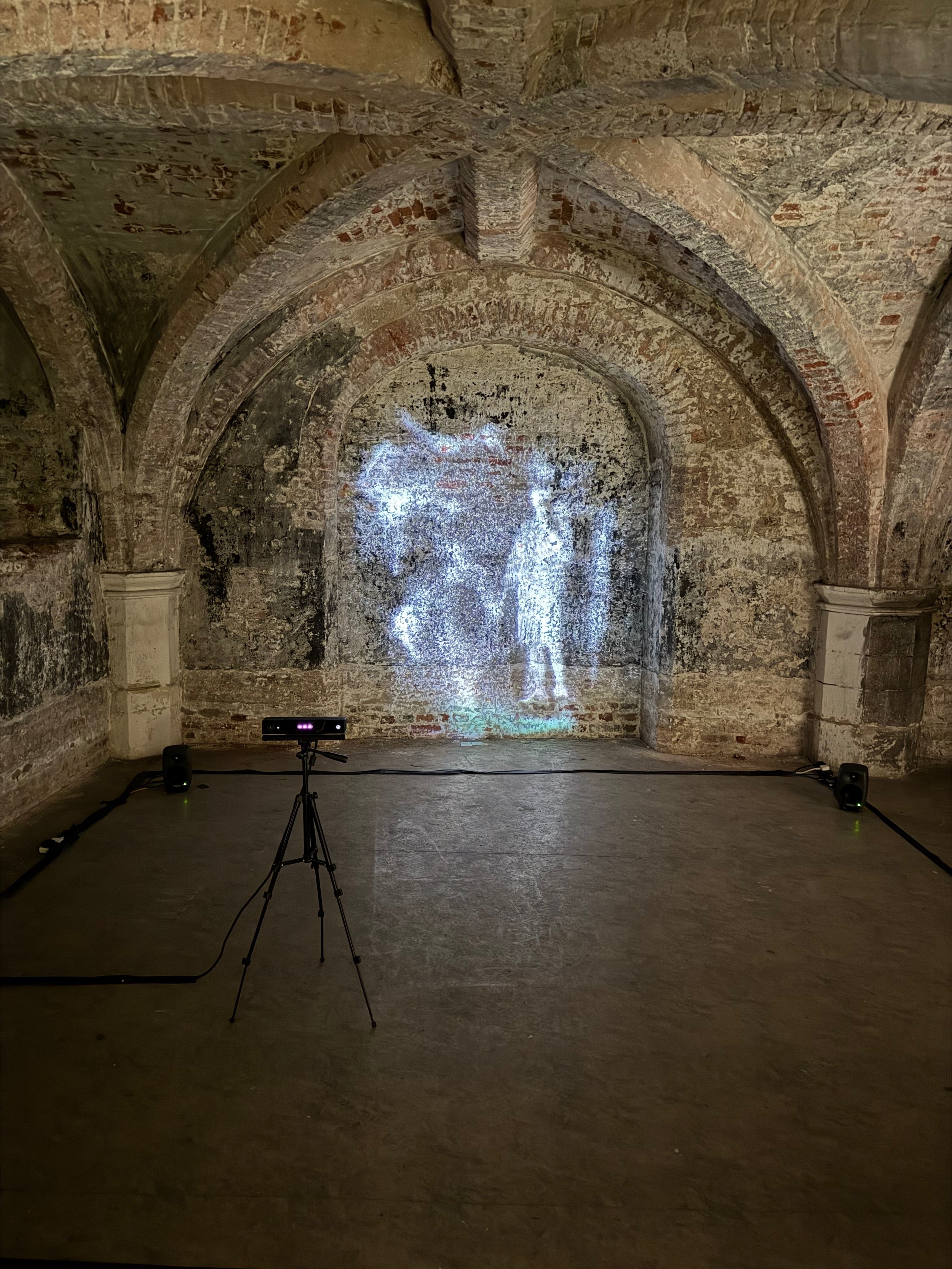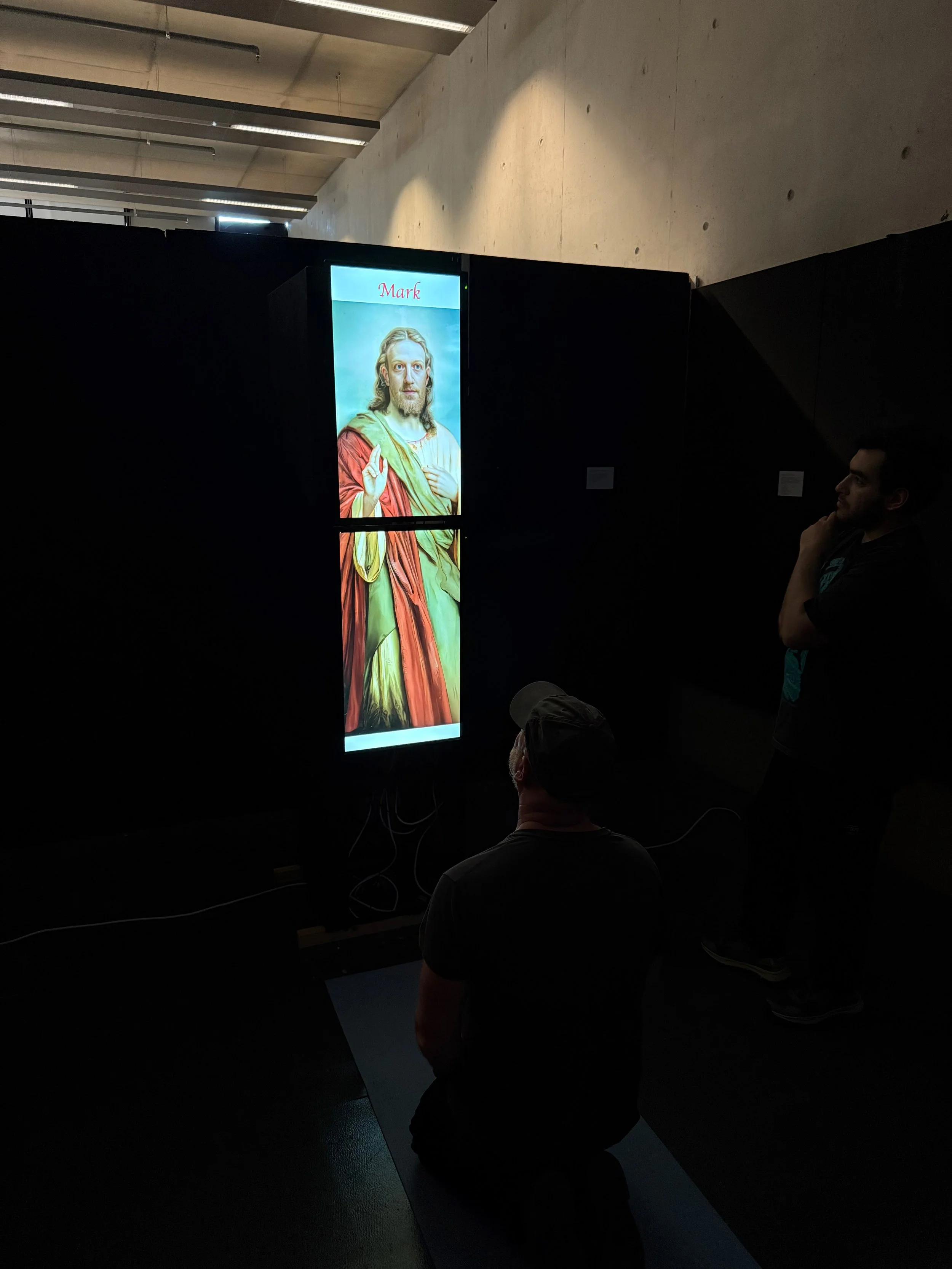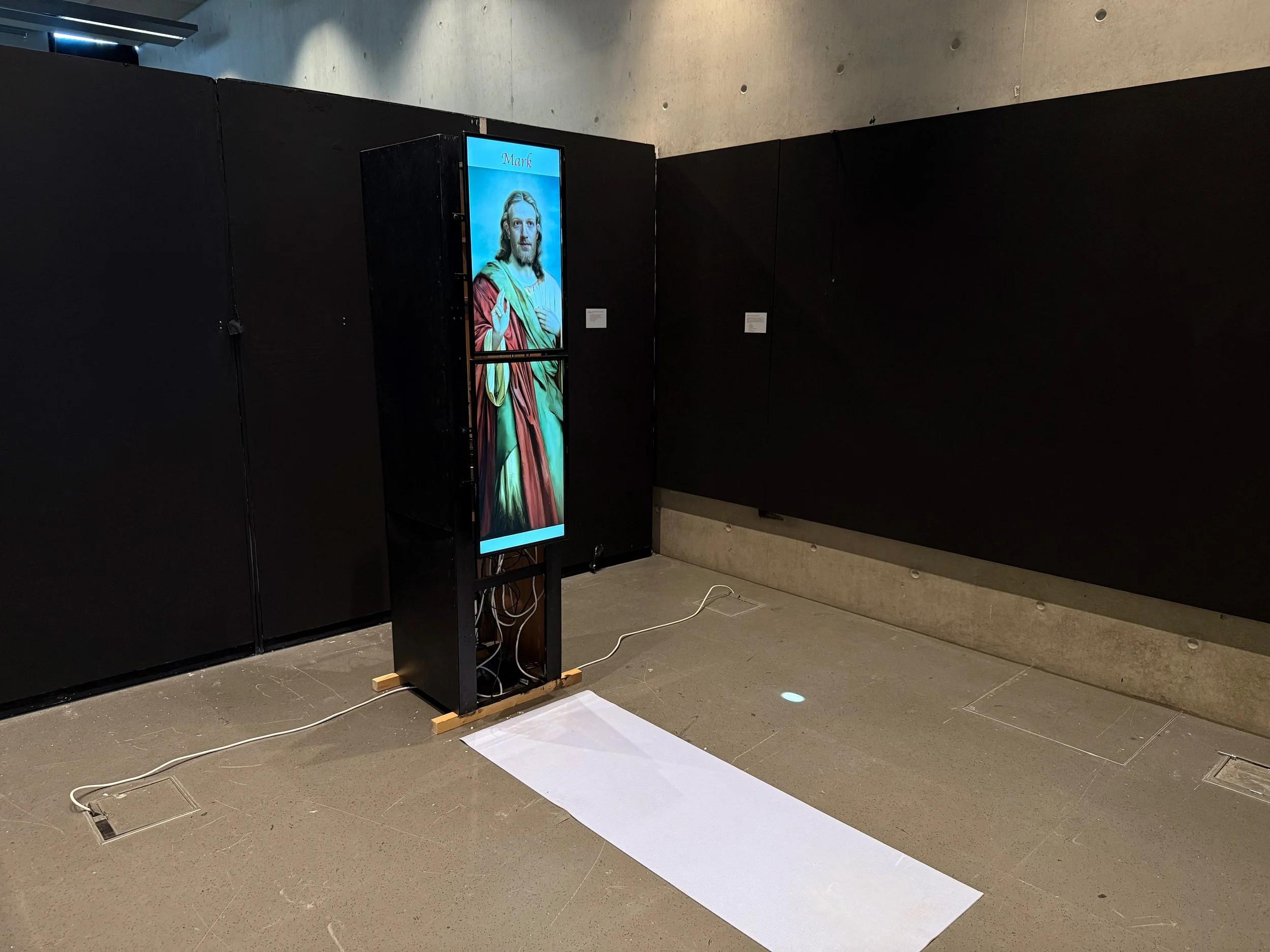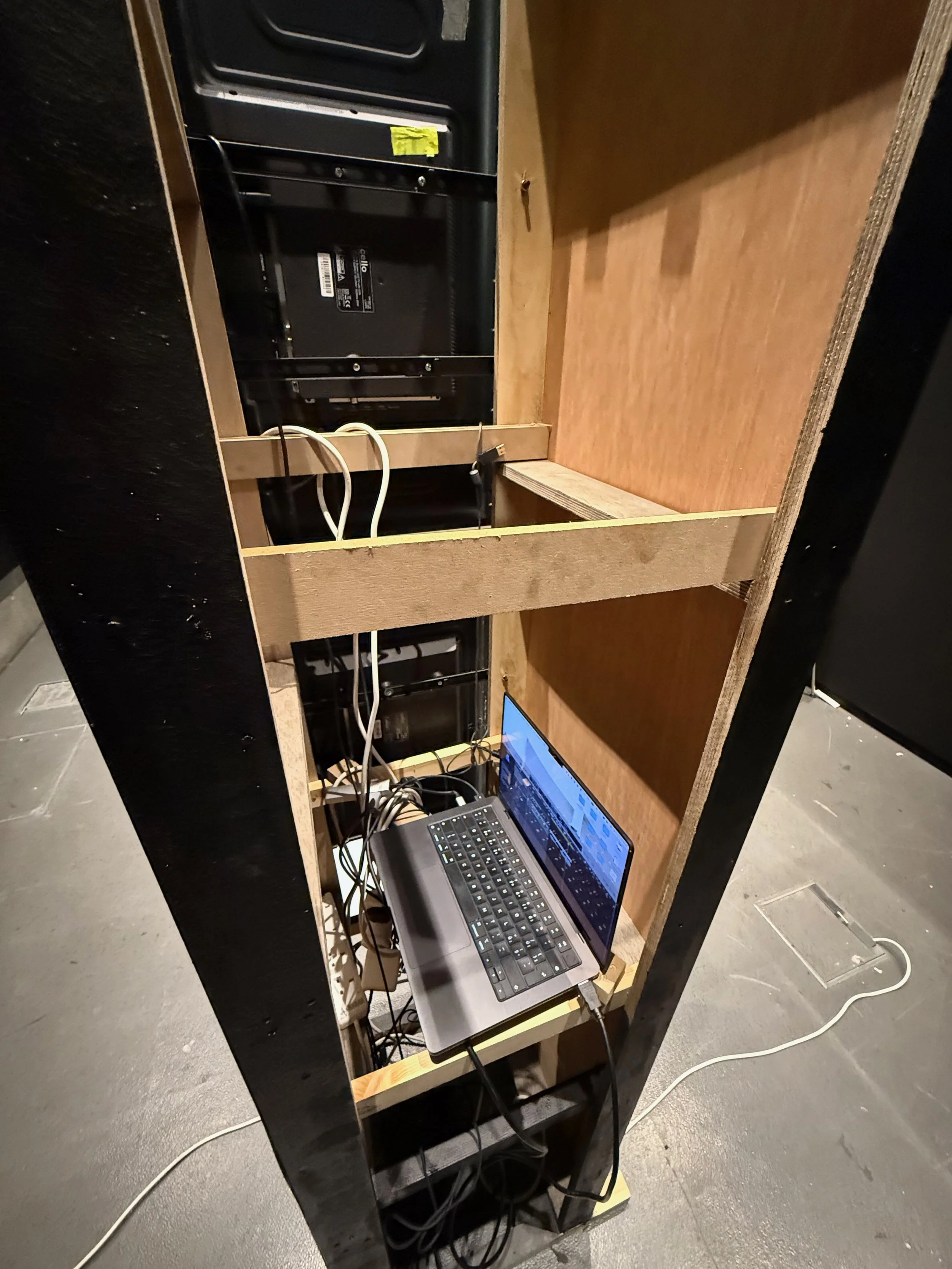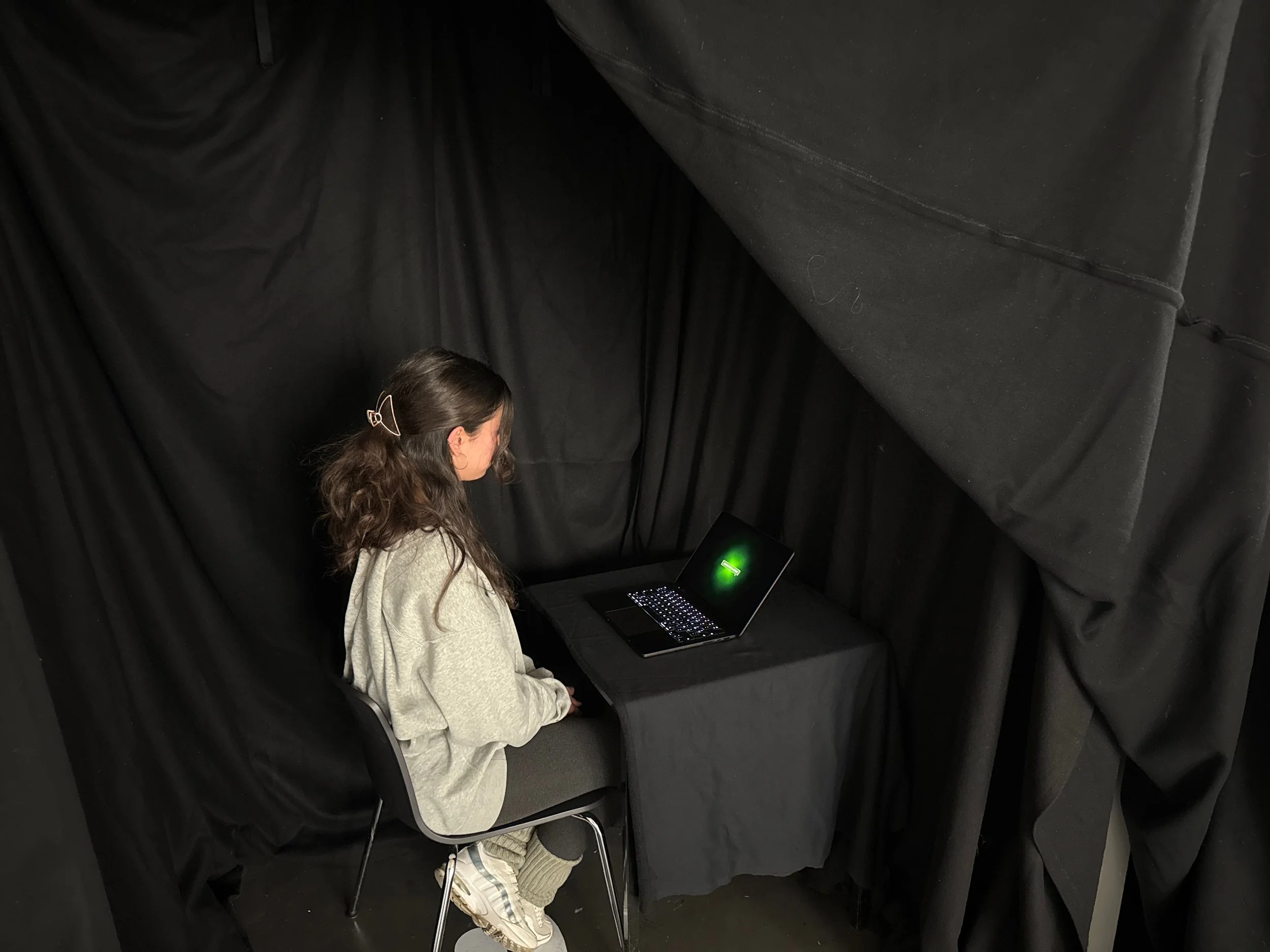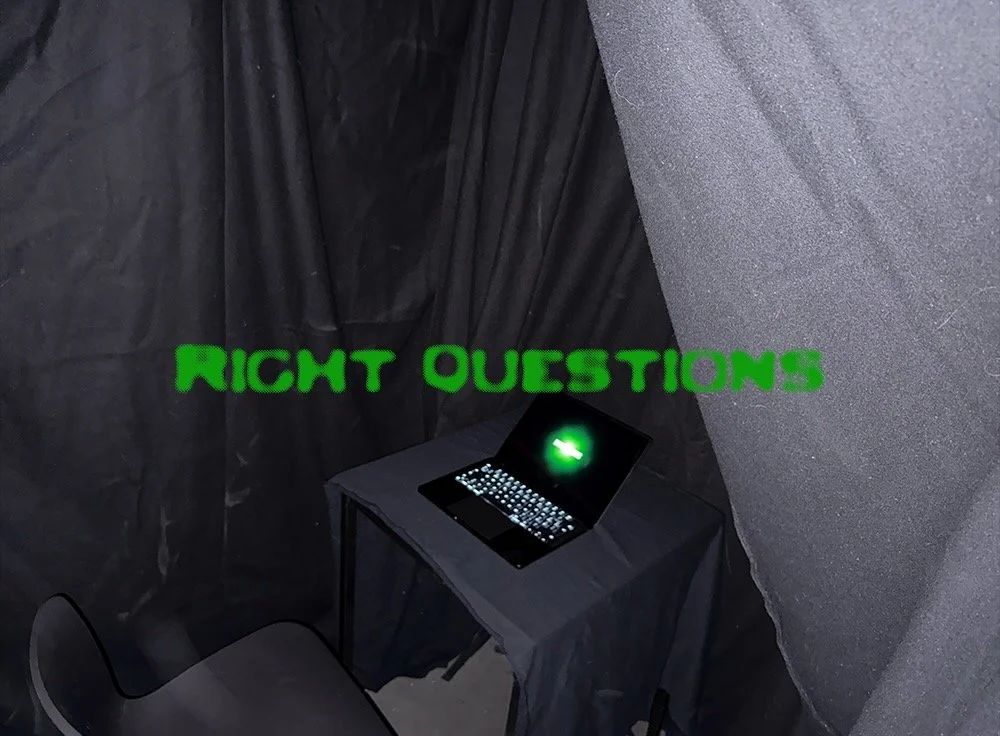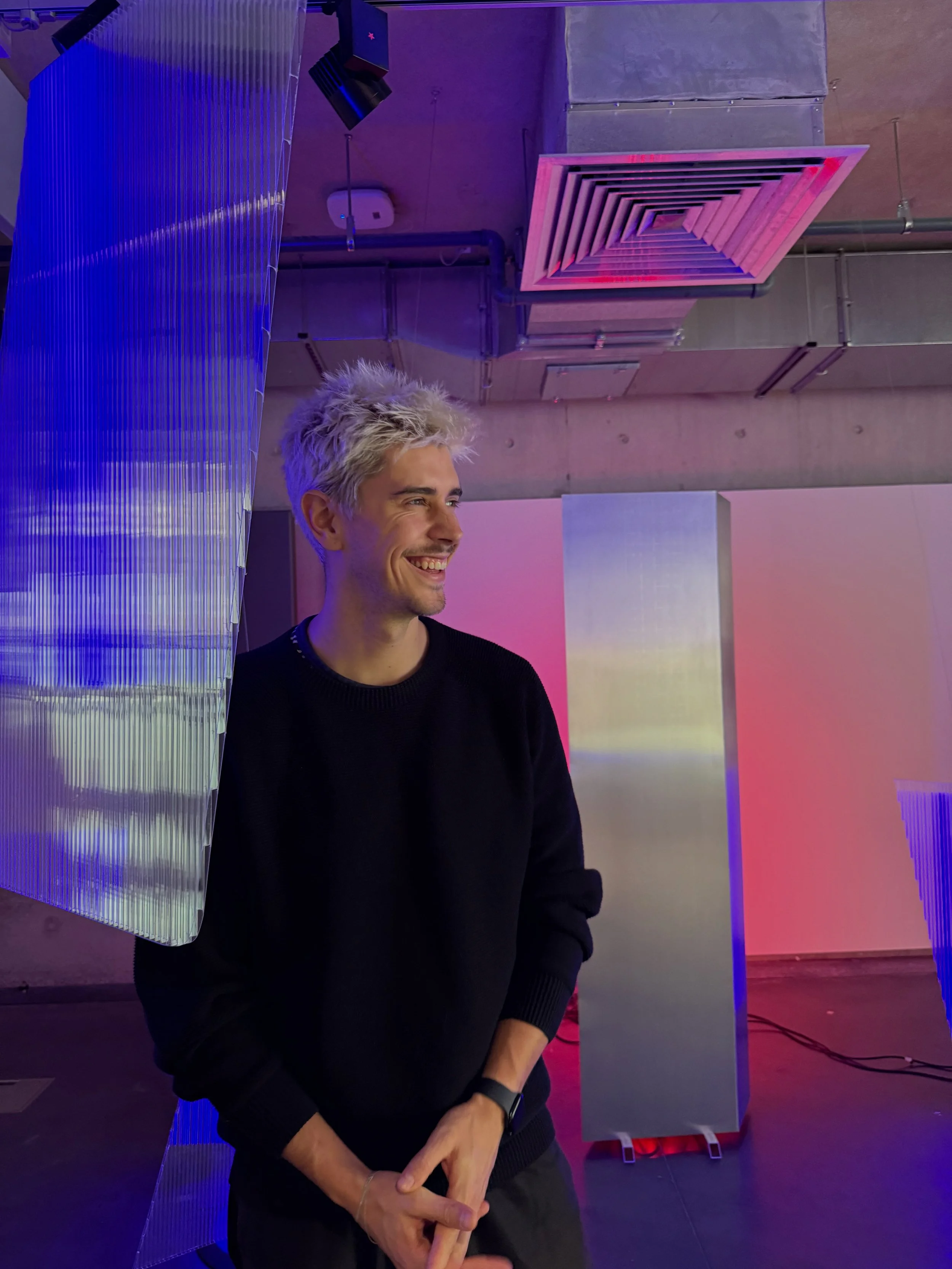NEW Media & digital art
IMprint of the departed, 2025
Interactive installation with sound
Dungeon of Queen Ann’s Court,
Old Royal Naval College, Greenwich
Imprint of the Departed transforms the fleeting presence of gallery visitors into ephemeral digital memories. Using a Kinect sensor and TouchDesigner, the installation captures silhouettes in real time and translates them into particle-based forms projected onto the wall. These ghostly outlines freeze for a moment, as if the space itself were remembering its visitors, before gradually dissolving into nothingness.
The work was first presented at the Interim Show in the atmospheric Undercroft of the Old Royal Naval College in Greenwich, a site resonating with themes of absence, traces, and history. Sound played a key role: a reinterpreted sea shanty, The Gallant Frigate Amphitrite, blended with subtle drum textures and spatial delays to create an immersive sonic environment.
By layering technology, sound, and memory, the piece explores the dialogue between the living and the departed, between the immediacy of presence and its inevitable disappearance.
Holy mark, 2025
Interactive installation with sound
Studio work
Holy Mark explores the convergence of faith and technology, reimagining the figure of Mark Zuckerberg as a digital messiah. Presented as a glowing altar crowned by an AI-generated image of Zuckerberg dressed as Christ, the installation reflected on the growing “technotheocracy” of the digital age, where tech leaders hold power once reserved for religious authorities.
Accompanied by choral-inspired sound and an interactive yoga mat inviting visitors to kneel or pose, the work blurred boundaries between worship, self-improvement, and online devotion. It questioned whether our reverence for technology mirrors the rituals and obedience of religion, asking what and whom we truly worship in a world shaped by algorithms.
Right questions, 2025
Interactive installation with sound
Studio work
Right Questions invites visitors into a meditative, confessional space where an AI-driven guide engages them in a deeply personal dialogue. Designed as a one-on-one experience, the work combines a custom-built large language model, an ambient soundscape, and an intimate physical setup reminiscent of ancient confession rooms.
Inside a darkened enclosure lined with sound-absorbing fabric, visitors face only the glowing screen and their own reflection. For seven minutes, they converse with an AI trained to redirect their thoughts toward self-reflection and ethical awareness. The installation’s sonic background, composed of stretched choral vocals, reversed voice textures, and spatial echoes, reinforces the contemplative atmosphere, creating a sense of isolation and focus.
Premiered in January 2025, the piece explores how technology might serve not as a distraction but as a medium for introspection. It reflects on the evolving relationship between humanity and artificial intelligence, suggesting that genuine change begins at the level of the individual mind.
What is this place?, 2025
Interactive installation with sound
stephen lawrence gallery
What is this place? is an interactive installation that positions the visitor as a traveller between worlds, between body and data, reality and imagination, religious ritual and technological experience.
At its centre stands a two-metre-high aluminium obelisk, a sharply cut sculpture resembling an object from another world. It is surrounded by a semi-transparent polycarbonate capsule, creating a threshold space. The material itself symbolises technological “transparency”. The installation is therefore both open and closed, inviting and distant.
When a visitor steps inside the capsule, a hidden PIR motion sensor activates the process of “teleportation.” The obelisk awakens with a scanning sound, while the custom-built application generates a text via ChatGPT, transforms it into a synthetic voice through ElevenLabs, and delivers it as a guided meditation. Each experience is unique - languages, scenes, and tonalities vary. The participant is invited to close their eyes and be transported elsewhere: to a desert, a river, a metropolis, or a speculative sci-fi landscape.
The work reflects how today’s technological corporations (through algorithms, recommendation systems, and advertising) shape our desires and cultural directions. Much like the church once dictated truth and history, today’s platforms exercise a similar authority, often invisibly. The obelisk thus becomes a kind of “digital altar,” staging a new form of ritual.
The meditations are delivered by a synthetic voice, a guide who never truly existed. This “speaker” is an AI model, a digital imprint of another voice, infinitely reusable. I am fascinated by how our identities increasingly migrate into the digital sphere from voice cloning to deepfake avatars. The installation asks: if our presence can be fully simulated, what does this mean for authenticity and continuity of the self?
